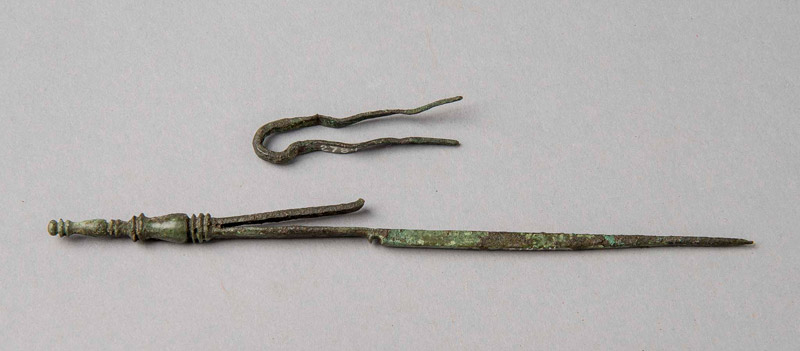As extensions of the fingers, forceps were used for multiple purposes, ranging from surgery to depilation. Many of the extant samples are simple tweezers made of a single strip of metal with turned-in edges or straight edges. There were forceps with smooth jaws, which might be similar to the ones Paul of Aegina recommends for epilation of granular conjunctivitis:
Some preferring burning to the operation of anabrochismus, turn the eyelid outwards, and with a hair-forceps drag out the offending hair, if there is but one, or two, or three.
Listen to the translation:
Forceps could also have toothed edges; the teeth were designed to offer extra traction. According to Celsus, for instance, they were used to remove tumors:
The tumors, which are called condylomata, when hardened are treated by the following method. First of all the bowel is clystered; then the tumor is seized with a forceps close to its roots and cut away. After this, the same course of treatment is followed as that described above; only if there is any excrescence it is repressed by copper scales.
Listen to the translation:


